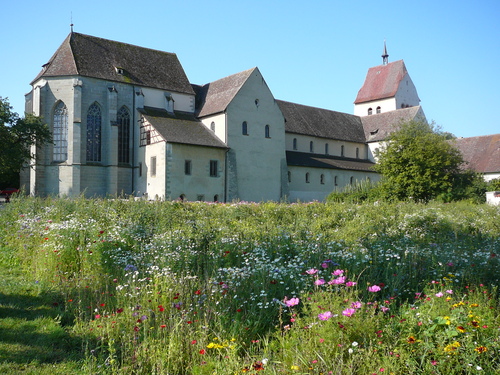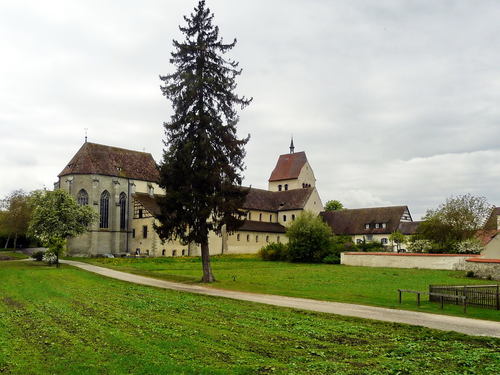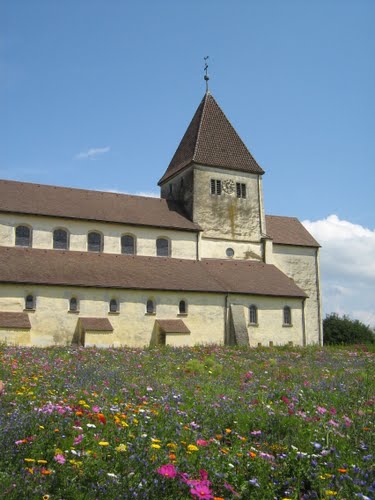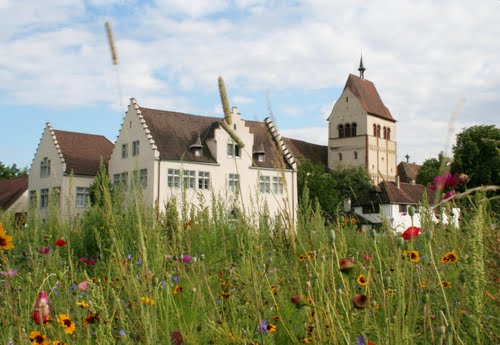The Benedictine Abbey of Reichenau was founded in 724 by the itinerant Saint Pirmin, who is said to have fled Spain ahead of the Moorish invaders, with patronage that included Charles Martel, and, more locally, Count Berthold of the Ahalolfinger and the Alemannian Duke Santfrid I (Nebi). Pirmin's conflict with Santfrid resulted in his leaving Reichenau in 727. Under his successor Haito the monastery began to flourish. It gained influence in the Carolingian dynasty, under Abbot Waldo of Reichenau (740–814), by educating the clerks who staffed Imperial and ducal chanceries. Abbot Reginbert of Reichenau (-846) built up the important book collection. Abbot Walahfrid Strabo (842–849), who was educated at Reichenau, was renowned as a poet and Latin scholar.
The Abbey stood along a main north–south highway between Germany and Italy, where the lake passage eased the arduous route. The Abbey of Reichenau housed a school, and a scriptorium and artists' workshop, that has a claim to having been the largest and artistically most influential centre for producing lavishly illuminated manuscripts in Europe during the late 10th and early 11th centuries, often known as the Reichenau School. An example of the scriptorium's production is the Pericopes of Henry II, made for the Emperor, now in Munich. Reichenau has preserved its precious relics, which include the pitcher from the wedding at Cana.
The Abbey reached its apex under Abbot Berno of Reichenau (1008–48). During his time, important scholars, such as Hermannus Contractus, lived and worked in Reichenau. In the second half of the 11th century, the cultural importance of the Abbey started to wane owing to the restrictive reforms of Pope Gregory VII, and also to rivalry with the nearby St. Gall; in 1540, the Bishop of Constance, an old rival of the Reichenau abbots, became lord of Reichenau, and, under the control of the succeeding bishops, the abbey's significance dwindled.
One of the island's many vegetable fields with Sankt Georg Kirche in the background when the abbey lands were secularized (initially in 1757 and permanently in 1803) and the monks disbanded under Napoleon, part of Reichenau's famed library was preserved in the state library (Landesbibliothek) at Karlsruhe. The Geographus Bavarus and several other important documents may be found in the Bavarian State Library in Munich. Since 2001 a small community of Benedictines has been re-established at Niederzell (Sts. Peter and Paul).
Burchard III, Duke of Swabia and Herman I, Duke of Swabia were buried here, as was Gerold of Vinzgau.









